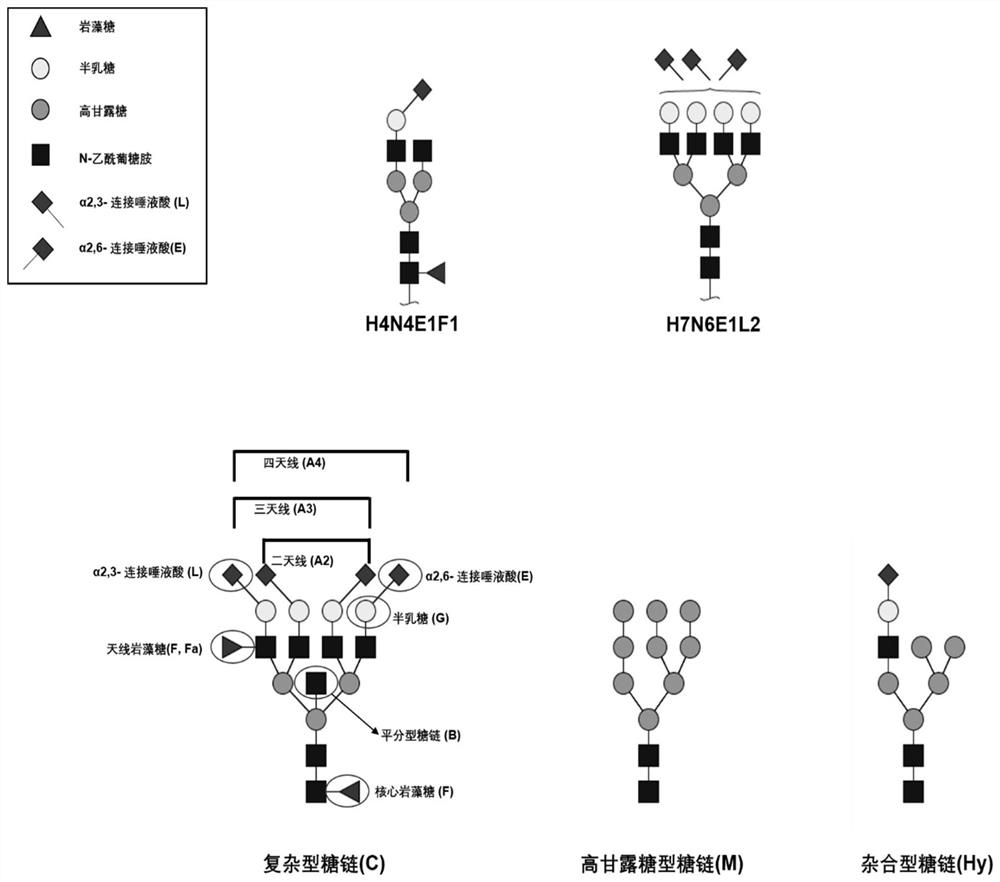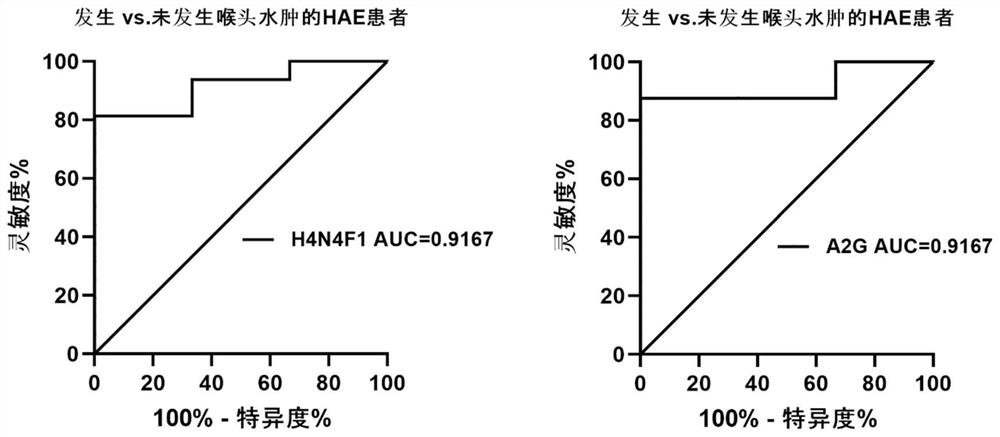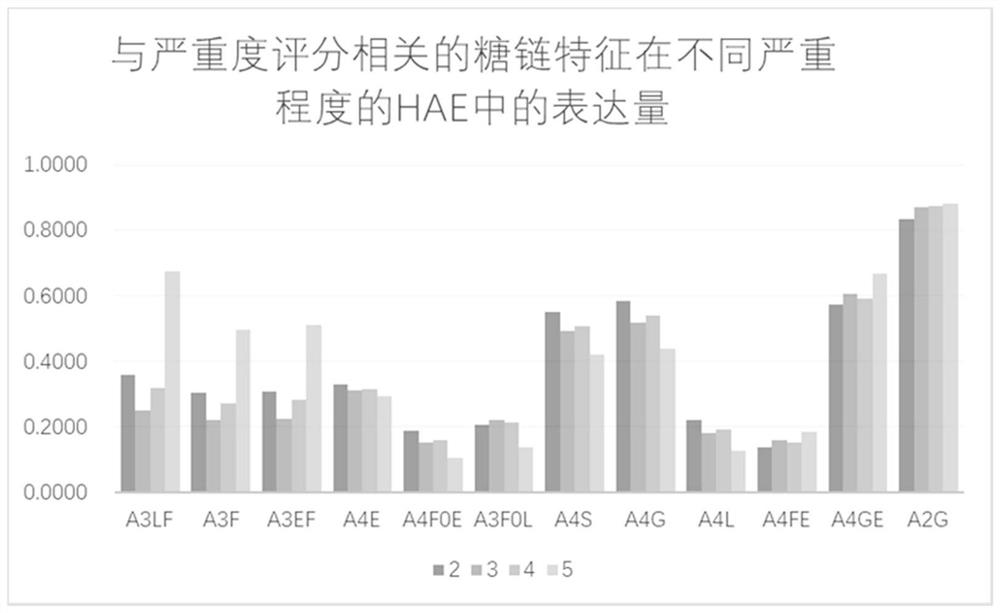Markers for hereditary angioedema and their application
A marker and genetic technology, applied in the field of medical testing, can solve the problems of easy misdiagnosis and mistreatment, low incidence of HAE, etc., and achieve the effect of short time consumption, high sensitivity and high accuracy
- Summary
- Abstract
- Description
- Claims
- Application Information
AI Technical Summary
Problems solved by technology
Method used
Image
Examples
Embodiment 1
[0079] Example 1 Markers used for HAE diagnosis
[0080] In the hereditary angioedema study cohort shown in Table 3, 141 N-glycan characteristics (including 59 directly detected glycan structures and 82 calculated glycans) were compared between HAE and healthy controls based on quantitative analysis results. N-glycan-derived characteristics). Characteristics of N-sugar chains (directly detected sugar chain structure + derived sugar chain characteristics calculated from directly detected sugar chains) with statistically significant differences between HAE and healthy controls, median of sugar chain expression amount in each group Values, p-values, AUC, sensitivity and specificity are shown in Table 4. The results showed that the expression levels of larger sugar chains (four-antennary), fucosylated sugar chains, and bisected sugar chains were significantly reduced in HAE compared with healthy controls, while sialylated sugar chains (including α2, 3-linked and α2,6-linked sial...
Embodiment 2
[0086] Example 2 Markers for Differentiating Treated and Untreated HAE Patients
[0087] The characteristic glycan markers of the treated HAE patients in the study cohort shown in Table 3 were analyzed. The results showed that five of the 33 glycan signatures used to distinguish untreated HAEs from healthy controls, namely A4G, A4S, A4L, A4F(0)E, and A4GE, recovered to the levels of healthy controls after treatment. (treated HAE vs. untreated HAE, p=* or ** or ***; treated HAE vs. HC, p=ns). Therefore, these five glycan characteristics (A4G, A4S, A4L, A4F(0)E and A4GE) can be used as markers for disease course monitoring, assessment and prognosis.
Embodiment 3
[0088] Example 3 Markers used to distinguish HAE with and without laryngeal edema
[0089] In the hereditary angioedema study cohort shown in Table 3, 141 N-glycan characteristics (including 59 directly detected glycan structures and 82 calculated glycans) were compared between HAE and healthy controls based on quantitative analysis results. The N-glycan-derived characteristics of these glycan characteristics were analyzed for the correlation between the glycan characteristics and the occurrence of laryngeal edema in HAE. The glycan characteristics significantly associated with laryngeal edema in HAE, the median value of glycan expression in subgroups with laryngeal edema and those without laryngeal edema, the p value of the correlation analysis, and the AUC value obtained by ROC evaluation are shown in the table. 6 shown. The results showed that H4N4F1 had a significant negative correlation with the occurrence of laryngeal edema, while A2G had a significant positive correlat...
PUM
 Login to View More
Login to View More Abstract
Description
Claims
Application Information
 Login to View More
Login to View More - R&D
- Intellectual Property
- Life Sciences
- Materials
- Tech Scout
- Unparalleled Data Quality
- Higher Quality Content
- 60% Fewer Hallucinations
Browse by: Latest US Patents, China's latest patents, Technical Efficacy Thesaurus, Application Domain, Technology Topic, Popular Technical Reports.
© 2025 PatSnap. All rights reserved.Legal|Privacy policy|Modern Slavery Act Transparency Statement|Sitemap|About US| Contact US: help@patsnap.com



